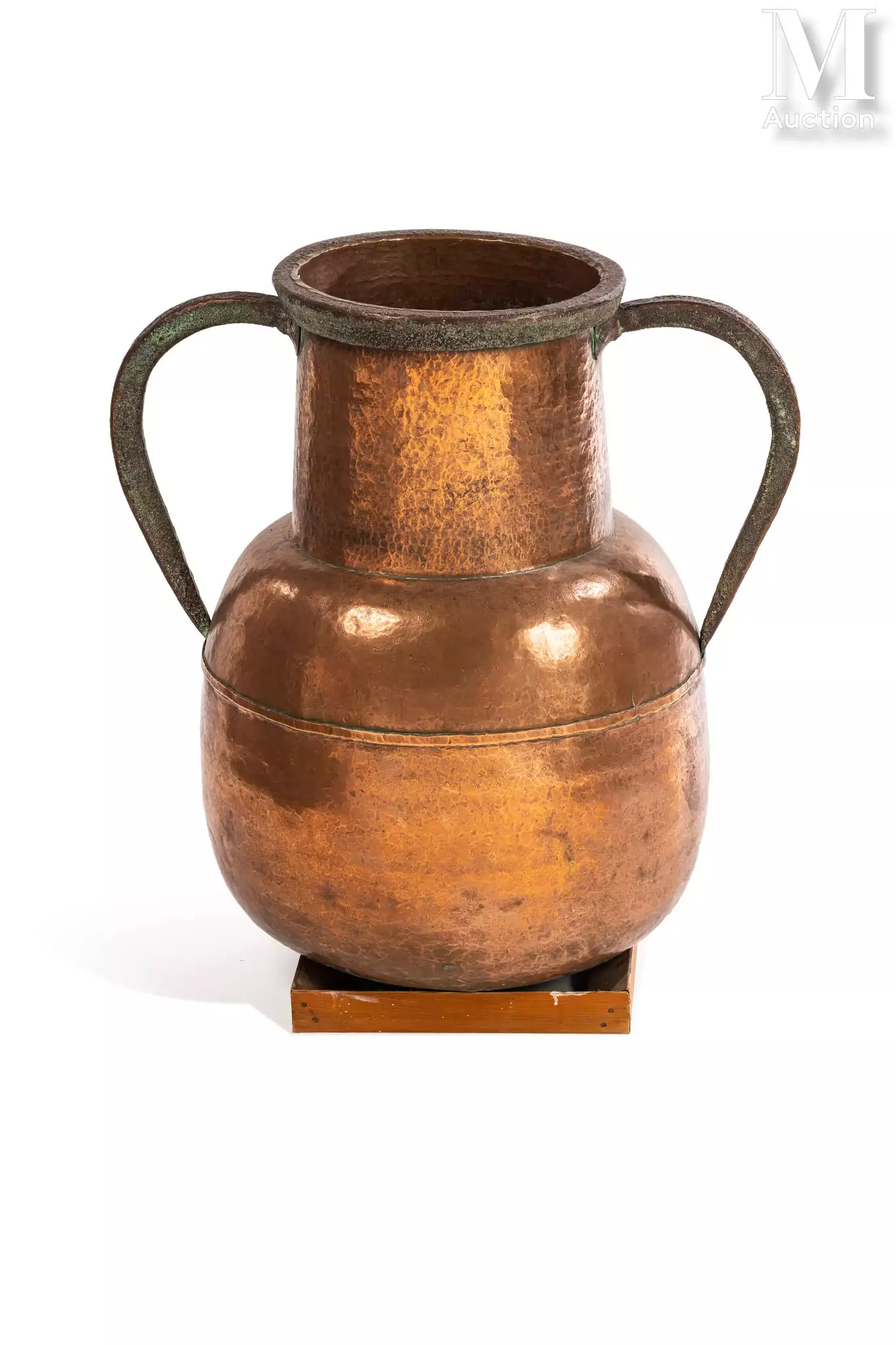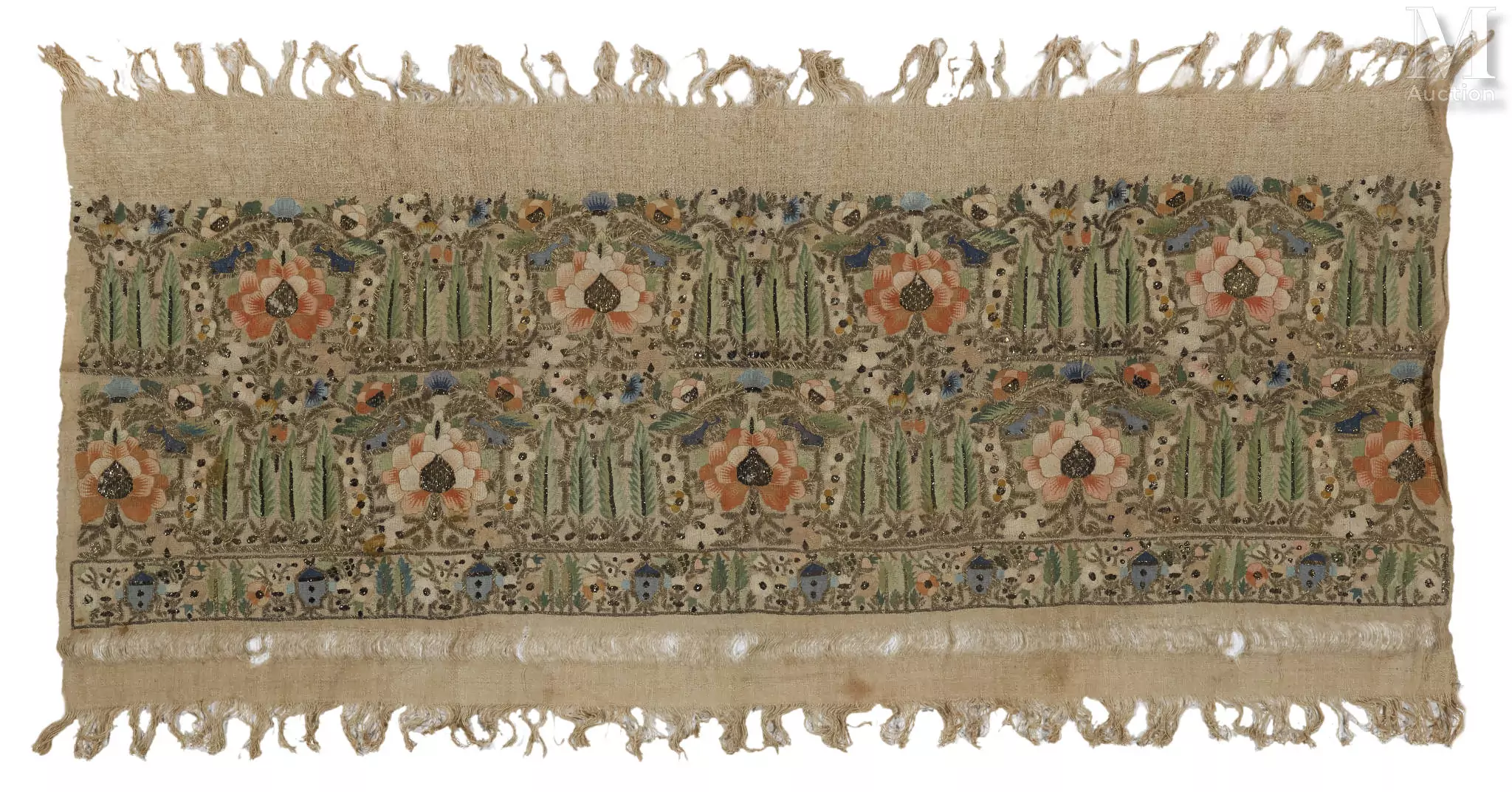Juz de Coran en Muhaqqaq
Asie centrale, XIVe siècle
Manuscrit arabe sur papier ivoire épais, 26 feuillets, calligraphié à l'encre noire sur trois lignes généreusement espacées en "Muhaqqaq" avec des inscriptions en persan disposées en chevrons, filets d'encadrement en bleu et or, avec séparations de versets enluminées à fond or cerné de rouge et noir.
Belle reliure en maroquin brun gravé et estampé rehaussé d'or, à motif polygonal central et écoinçons.
27 x 18 cm
Texte : Coran 12:24 – 12:51.
A Qur'an Juz, Central Asia, 14th century, Arabic manuscript on paper, 26ff., with 3ll. of bold black Muhaqqaq, three generously spaced lines that alternate with naskh inscriptions arranged in a chevron pattern, with verses separations in gold roundels.
Very fine original binding.
La calligraphie de ce manuscrit coranique révèle que son exécution est l'oeuvre d'un maître calligraphe qui devait opéré pour un riche commanditaire. En effet, réaliser un coran dont les pages ne sont couvertes que de trois lignes nécessitait d'importants moyens, tant pour l'approvisionnement en papier, pigments, or, et pour le calligraphe. La calligraphie est remarquable par sa régularité. Le Muhaqqaq était un type de calligraphie majestueuse, considérée comme l'un des plus beaux, ainsi que l'un des scripts les plus difficiles à bien exécuter.
Les petits mots interlinéaires en naskhi sont des traductions persanes de la parole de Dieu, pour assurer la compréhension du texte arabe à son lecteur et propriétaire qui était probablement plus familier avec le persan qu'avec l'arabe.
The calligraphy of this Koranic manuscript reveals that its execution is the work of a master who must have operated for a wealthy sponsor. Indeed, making a Koran whose pages are covered by only three lines required significant resources, both for paper, pigments, gold, and for the calligrapher. The calligraphy is remarkable for its regularity. Muhaqqaq was a majestic type of script and was considered to be one of the most beautiful, as well as one of the most difficult scripts to execute well.
The small interlinear words in Naskhi are Persian translations of the word of God, to ensure understanding of the Arabic text to its reader and owner who was probably more familiar with Persian than Arabic.
Information important concernant le retrait de vos achats :
MILLON assurera la gratuité du stockage pendant 45 jours après la vente. Passé ce délai, des frais de stockage et de transfert de nos locaux vers notre garde-meuble au 116 bd Louis Armand - 93330 Neuilly sur Marne, vous seront facturés à raison de :
- 10 € HT / Lot / semaine révolue pour un volume supérieur à 1 M3
- 7 € HT / Lot / semaine révolue pour un volume inférieur à 1 M3
- 5 € HT / Lot / semaine révolue pour un stockage « tenant dans le creux de la main »
Ces frais ne concernent pas les lots déposés au magasinage de l'Hôtel Drouot dont le coût dépend de l'Hôtel Drouot lui-même.
Rappel important : Concernant les ventes dites « des aubaines » réalisées dans notre garde-meuble, la gratuité n’excèdera pas 15 jours.
***********************
Pour toute demande de transfert par navette spéciale (Une fois par semaine au minimum) de lots achetés entre nos locaux parisiens ou vers/de notre garde-meuble, le bordereau initial sera majoré de :
- 15 € HT par lot de petit gabarit et ne surpassant pas 5 pièces.
- 40 € HT par bordereau n’excédant pas 5 achats et jusqu’à 1 M3.
Si les lots transférés ne sont pas réclamés au-delà de 7 jours après leur enregistrement dans nos locaux parisiens, ils seront renvoyés vers notre garde-meuble sans possibilité de remboursement et les délais de gratuités reprendront à compter de la vente.
Les meubles sont exclus des lots dits « transférables par navette » mais pourront faire l’objet de devis de livraison.
Pick up of your lots:
Millon gives you 45 days free storage after the sale. After this period, storage and transfer fees from our offices to our warehouse at 116 bd Louis Armand - 93330 Neuilly sur Marne, will be charged as it follows:
10 € pre-tax per lot and per week completed for storage superior to 1 M3
7 € pre-tax per lot and per week completed for storage less than 1 M3
5 € pre-tax per lot and per week completed for storage that "fit in the palm of your hand"
These fees do not apply to lots deposited at Drouot’s warehouse, where the cost depends on the Hôtel Drouot itself.
Important reminder: Concerning the sales known as "bargains" carried out in our furniture storehouse, the free storage will not exceed 15 days.
******************************************************
For any special shuttle transfer request of your lots (once a week at least) between our Parisian offices or to/from our storage, the initial invoice will be increased as follows:
- 15 € pre-tax per small lot and not exceeding 5 pieces.
- 40 € pre-tax per maximum per invoice not exceeding 5 purchases and up to 1 M3.
If the transferred lots are not claimed beyond 7 days after their registration in our Parisian offices, they will be sent back to our warehouse without any possibility of reimbursement and the free storage period will start again counting from the sale date.
Furniture is not included in the "shuttle transferable" lots but may be subject to a delivery quote.




